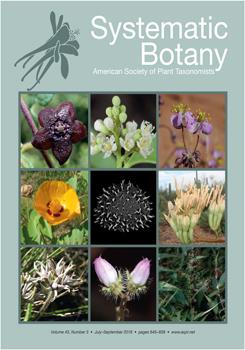Sequence data exist for only about 1/5 of plant species; therefore we are at risk of losing many branches of the tree of life even before they are placed into a molecular evolutionary context. This necessitates methods for phylogeny estimation of understudied, rare, and threatened taxa, which often forces researchers to utilize historical collections. The restriction site-associated DNA sequencing (RADseq) family of reduced representation sequence generation has provided a flexible and efficient method for the rapid generation of hundreds to tens of thousands of loci, and has recently seen adoption for phylogeny estimation. However, these methods have been primarily utilized with freshly collected or well preserved tissue. Here we sample all taxa of a genus of rare flowering plants, Chloropyron (Orobanchaceae), from herbarium sheets dating up to 25 yr and use double digest restriction site-associated DNA sequencing (ddRADseq) to resolve intraspecific relationships. We find all species in Chloropyron to be monophyletic, with the inland taxon C. maritimum ssp. canescens sister to the rest of the coastal C. maritimum (ssp. maritimum + ssp. palustre), and the two distinct subspecies of C. molle to be each other's closest relative with strong support. In addition, we demonstrate the utility of reduced representation libraries to address phylogenomic problems in a group of rare species and address pitfalls of accurately inferring relationships when the amount of missing data is large, as is often the case when using historical specimens and rare taxa.
How to translate text using browser tools
10 August 2018
Species Tree Estimation Using ddRADseq Data from Historical Specimens Confirms the Monophyly of Highly Disjunct Species of Chloropyron (Orobanchaceae)
Ian S. Gilman,
David C. Tank
ACCESS THE FULL ARTICLE

Systematic Botany
Vol. 43 • No. 3
Jul-Sep 2018
Vol. 43 • No. 3
Jul-Sep 2018
halophyte
hemiparasite
missing data
phylogenomics
restriction site-associated DNA sequencing




